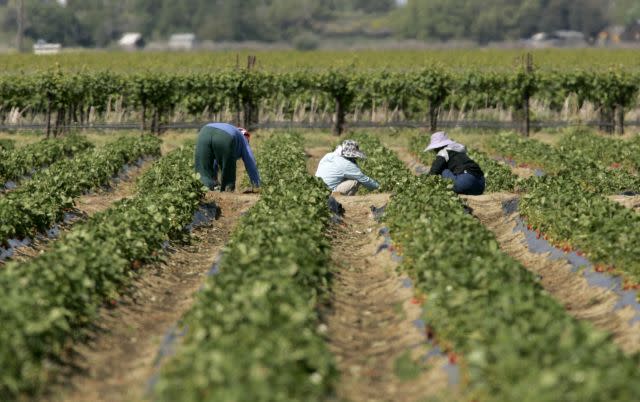California can’t catch a break: after drought, flooding may be next

It might seem strange to worry about floods during a drought. But that’s exactly what California needs to doing right now.
California’s parched landscape may get some relief with rain and snowfall from El Niño. However, there is such a thing as too much H20—particularly when it comes to the prospect of waters with heightened sea levels blasting through the increasingly brittle levees of the Sacramento Delta.
The story of Sacramento’s levees is a lesson in the dangers of short-sighted policy. The story of Sacramento’s levees is a lesson in the dangers of short-sighted policy—particularly in the face of climate change. When weather patterns shift so rapidly and natural disasters are so unpredictable, we need to learn to plan ahead even for problems that seem far away.
Levees may not seem like the sexiest topic, but they are vital to California’s economy and livelihood. The Delta region supplies two-thirds of Californians, or 23 million people, with drinking water—predominantly in Southern California. The levees protect this drinking water from contamination by ocean water.
In addition, millions of acres of agricultural land in California depend on the Delta for irrigation. That water is responsible for producing half the fruits and vegetables in the United States, and one-quarter of its dairy products.
Unfortunately, the structural integrity of the Delta’s levees has fallen prey to the old adage: out of sight, out of mind.
Only a few years ago, state planners issued dire warnings about the need to update the levees’ infrastructure. But these issues were put on the back burner when the rain stopped falling and Californians focused on reducing their water usage.
“The delta levees have had unique threats for decades and the drought has not materially changed those conditions,” says Lester Snow, who has been working on Delta issues for many years as the director of CALFED and previously as the director of the Department of Water Resources under governor Arnold Schwarzenegger.
Part of the problem is that Sacramento has older levees built with dredge material—piles of earth and dirt. This makes them more fragile than modern “engineered” levees that use concrete and rebar. Given the levees’ proximity to active fault lines, they’re in dire need of renovation.
“The big concern is the potential for a near-Delta earthquake triggering multiple failures” of the levees, says Snow.
The other problem is that much of Sacramento’s farmland is below sea level. “This means the levees act more like dams with constant pressure” from rivers and estuaries “rather than periodic pressure during flooding,” Snow says. Because the levees are always working to keep water at bay, they wear down more quickly.
With climate change contributing to rising sea levels, this pressure on the levees only stands to increase. But like many environmental issues that demand immediate attention, the solutions to Sacramento’s levee problem are wrapped up in politics.
The solutions to Sacramento’s levee problem are wrapped up in politics. Back in 2010 when the levees were a hot topic, the University of California, Berkeley reported that at least 220 government agencies have jurisdiction in the Delta. Decentralized governance makes it hard to create ownership of the at-risk levees. And it’s really hard to convince so many groups that the levees need to be restored—particularly when doing so could cost up to $1.5 trillion.
“You have elected officials who have constituents who want smooth roads and safe neighborhoods, good schools and low taxes and they want it all now,” Will Travis, a sea level rise planning consultant, tells Quartz. “Convincing those people that they should spend their tax dollars on something that won’t pay a dividend until well after the elected official is gone from office is the biggest challenge.”
The Delta region does have some money coming its way: a portion of the $395 million dedicated to flood management under California’s Water Quality, Supply, and Infrastructure Improvement Act of 2014. But “the cost of making delta levees seismically safe is so high that full upgrade is unlikely,” Snow says.
Meanwhile, although the drought hasn’t directly affected levee conditions, it has hastened the decline of the delta smelt population. The fish’s status as an endangered species directly influences future infrastructural updates of the levees, as environmental groups worry that renovating the levees could further hurt the smelt population, reducing the amount of water needed for them to spawn properly.
There have been 160 levee failures over the last century. Unfortunately, it may take disaster to compel officials to take action. There have been 160 levee failures over the last century. The destruction caused by 2005’s Hurricane Katrina offers terrible proof of the consequences of poorly reinforced barriers. Yet it’s much easier to secure funding to spend on levee infrastructure after they have flooded.
In the era of climate change, this mentality is increasingly untenable. We need to shift from focusing only on clear and present threats to thinking preventatively.
“The biggest challenge isn’t to figure out what the problem is and what is to be done about it,” Travis says. “The biggest challenge is to take something and look at it and say if we don’t deal with it now, it’s going to be a crisis in the future.”
We welcome your ideas at ideas@qz.com.

Sign up for the Quartz Daily Brief, our free daily newsletter with the world’s most important and interesting news.
More stories from Quartz:

